Junk Food
One-Hand Chips
From Japan, comes a solution to the problem of getting your fingers greasy when you eat potato chips. Snack-maker Koike-ya has designed chips that you can 'drink' directly from the bag. From the Wall Street Journal:It looks like a bag of french fries to me. And couldn't you do this on your own with regular chips if you smashed them up while in the bag, and then cut an angled opening to pour them right into your mouth?
More details: potatopro.com
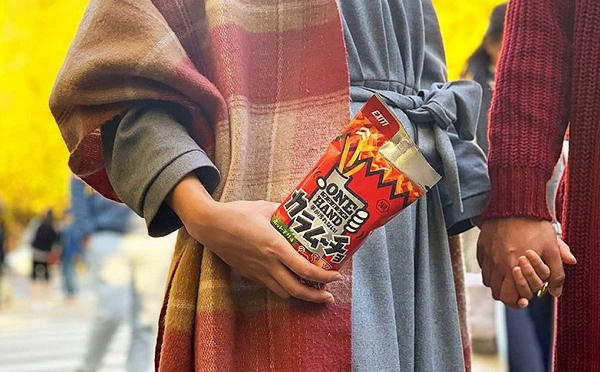
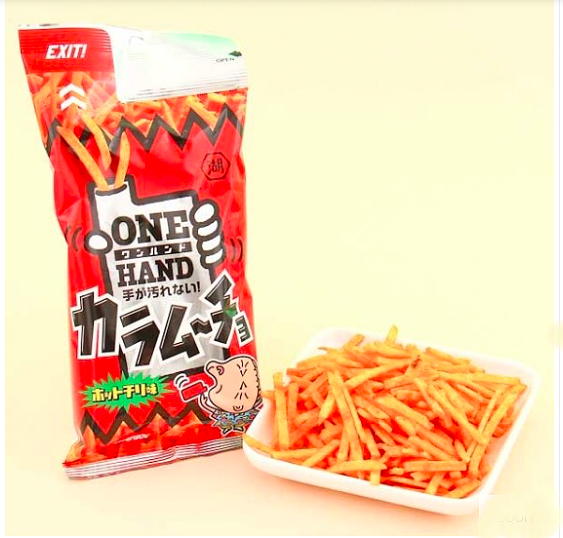
via Blippo
Posted By: Alex - Tue Mar 05, 2019 -
Comments (5)
Category: Junk Food
Pizza Pocket Hoodie
A hoodie with a pouch to keep a slice of pizza warm. Because, why not?It's already almost met its funding goal on Kickstarter, with 26 days still to go. You can have one of your own for a mere $55.
Posted By: Alex - Fri Mar 01, 2019 -
Comments (3)
Category: Fashion, Junk Food
Hardee’s Road Runner and Ernie
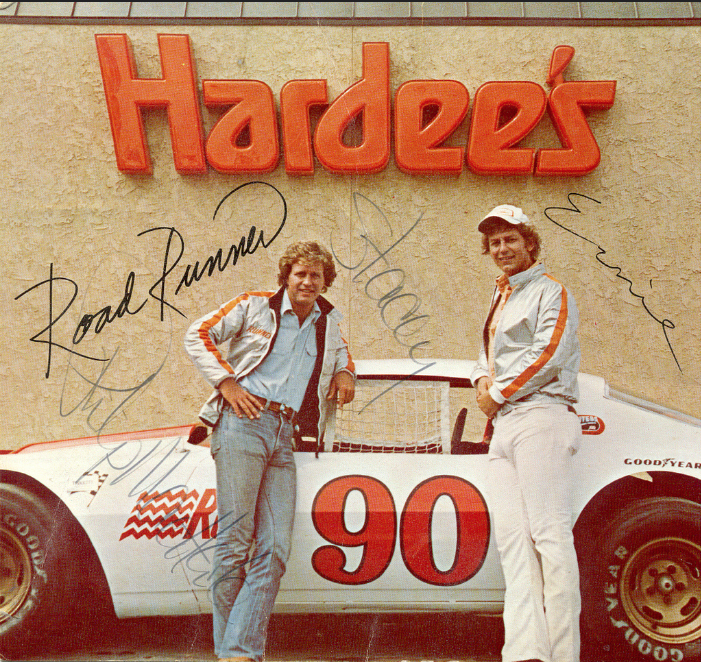
Two lame-o's seeking to capitalize on SMOKEY AND THE BANDIT popularity are employed to endorse burgers.
Many, many more Hardee's commercials here.
Posted By: Paul - Sun Feb 24, 2019 -
Comments (2)
Category: Business, Advertising, Fads, Stereotypes and Cliches, Junk Food, 1970s, Cars
Hot Dogs vs Hamburgers
According to a study conducted by Dr. Leo Wollman (and reported in Omni magazine in 1980), one's preference for hot dogs or hamburgers when going out for a quick lunch has a deeper significance:"The people who eat hot dogs usually grab it and go," he said. "Hamburger eaters take more time. They're better dressed executive types, used to making decisions—well done, rare, ketchup or mustard."
I like both hot dogs and hamburgers, but if I was pressed for time I'd probably grab a hot dog over a hamburger. However, I don't match Wollman's hot-dog personality type at all. So I wouldn't put much stock in his results. And digging into his bio a bit further, it doesn't seem that he was exactly known for his credibility as a researcher.
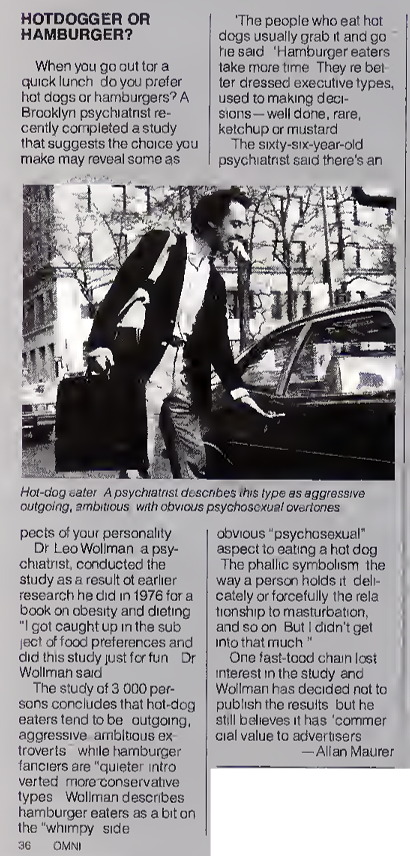
Omni - July 1980
Posted By: Alex - Sat Dec 01, 2018 -
Comments (7)
Category: Food, Junk Food, Psychology
Shoes made from chewing gum
They can be yours for €199.95 (about $228). As the gumshoe website explains:But what happens if people stop dropping their gum on the streets? Will the gumshoe company just go out of business?
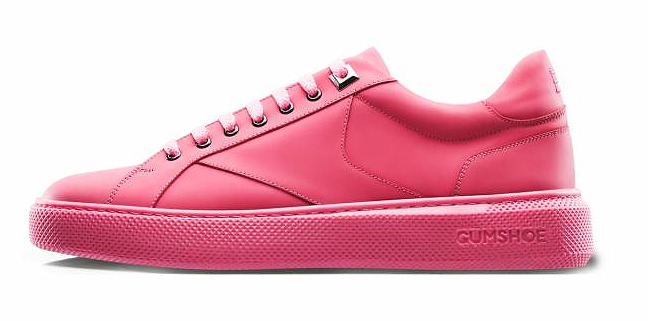
Posted By: Alex - Sun Aug 12, 2018 -
Comments (5)
Category: Fashion, Shoes, Junk Food
A quarter pounder, hold the cheese
Cynthia Kissner and Leonard Werner have filed a class-action lawsuit against McDonald's, complaining that the cost of a Quarter Pounder without cheese is the same as it with cheese.As people who like their Quarter Pounders without cheese, they feel ripped off and are asking for $5 million in damages.
Read their complaint here.
More info here.
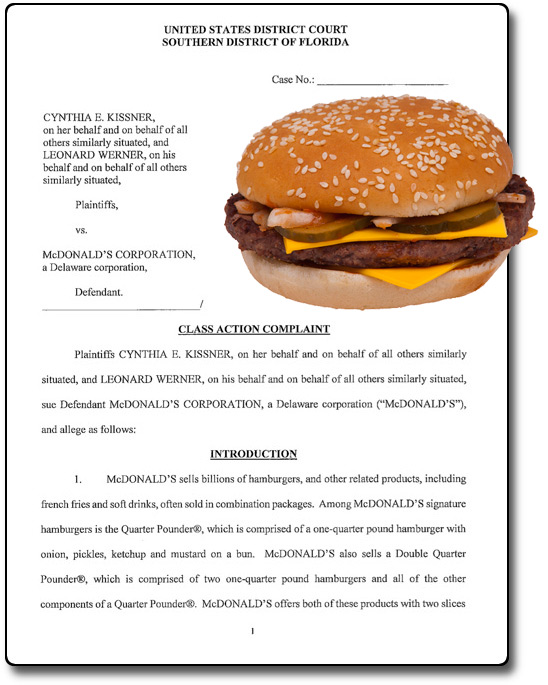
Posted By: Alex - Tue Jun 26, 2018 -
Comments (4)
Category: Lawsuits, Junk Food
The Golden Flake Gobbler
Amazingly, never sued by Sesame Street or Jim Henson for resemblance to the Cookie Monster.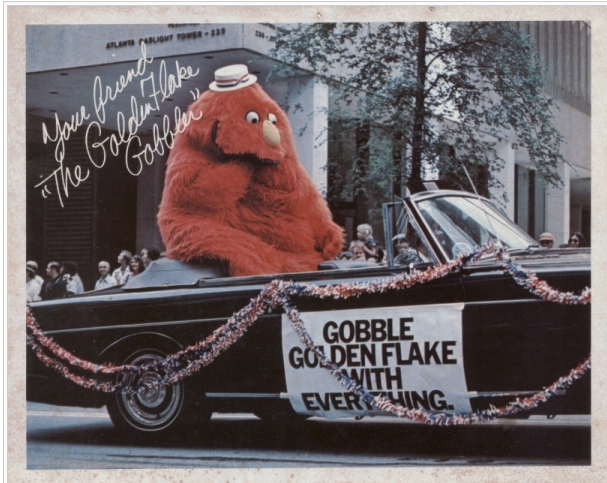
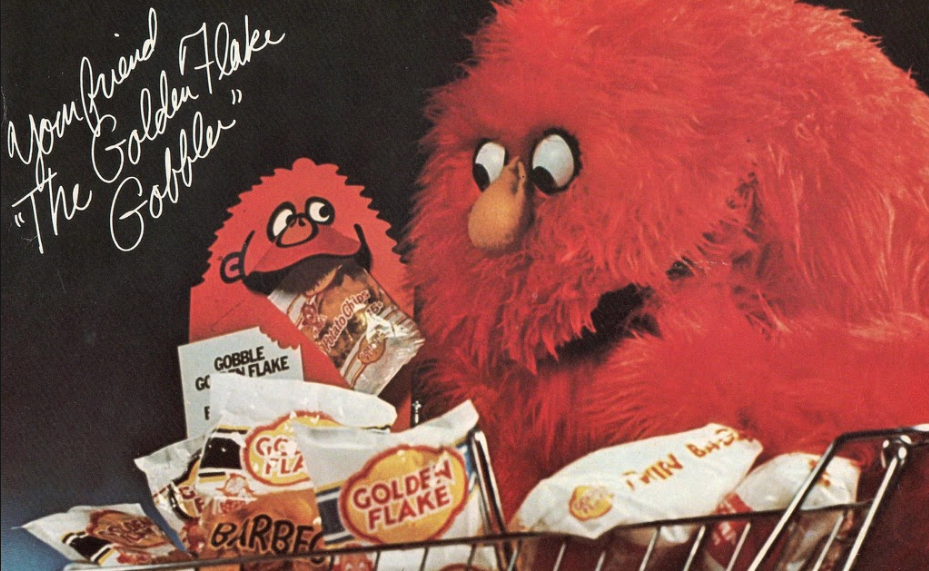
Explanation here.
Posted By: Paul - Tue Apr 24, 2018 -
Comments (5)
Category: Business, Advertising, Corporate Mascots, Icons and Spokesbeings, Regionalism, Junk Food
Pretzels for God
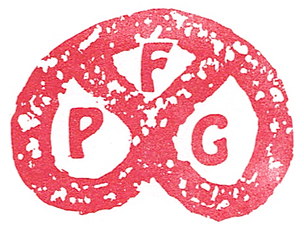
The Pretzels for God movement was founded by Marlene McCauley of Phoenix, Arizona in 1973 after she became inspired to restore the pretzel to what she felt was its rightful place in Christian worship.
Apparently Christians invented pretzels back in the fifth century to eat during Lent since the pretzels contained only water, flour, and salt, but no eggs or milk which were forbidden during the observance. The shape of the pretzel symbolized arms crossed in prayer.
However, in modern times this religious origin has been largely forgotten as pretzels have become a bar and snack food. McCauley was determined to right this wrong. Specifically, she hoped to encourage Christians to eat pretzels during Lent and also to recite before each meal the "pretzel prayer":
More info:
"The Twisting Religious Plot of the Pretzel," Houston Chronicle
"Pretzels for God,"[PDF] text of a speech delivered by McCauley at the National Pretzel Convention in 1974
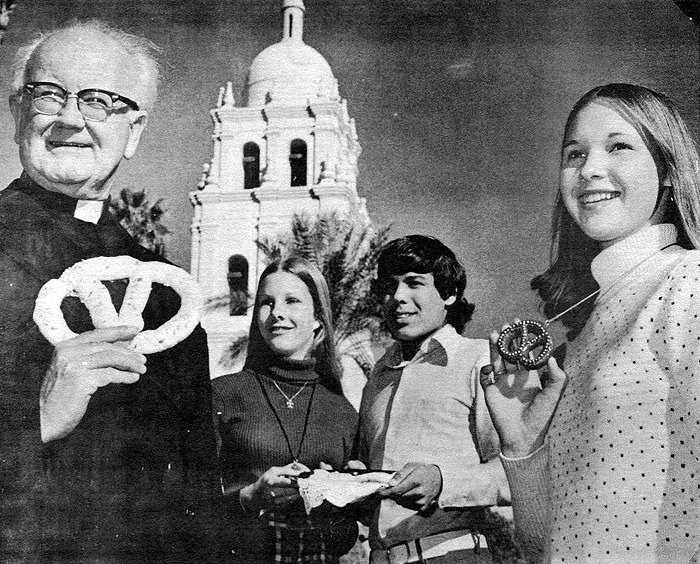
"Rev. Cornelius O'Mara, S.J. holding Lenten Christian symbol of prayer and penance with students from Central High School"

Kane Republican - Feb 23, 1974
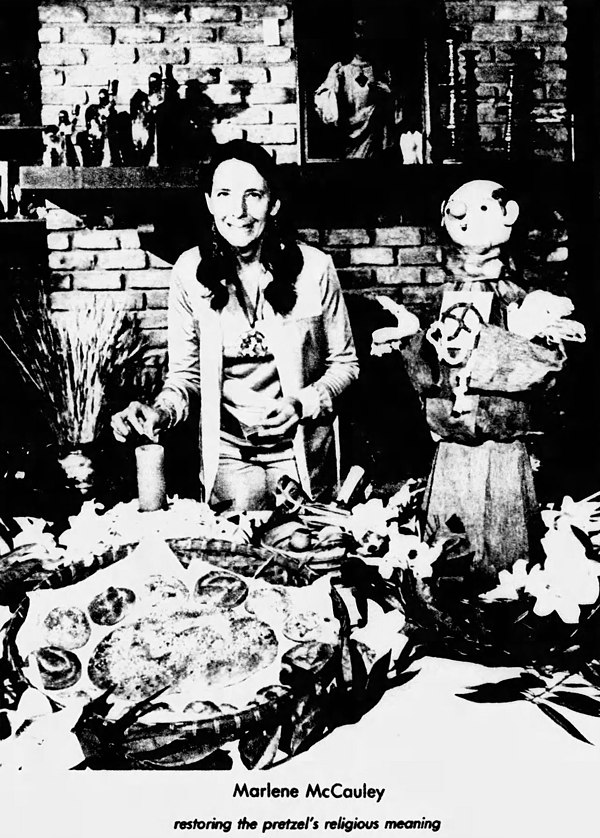
Arizona Republic - Apr 8, 1979
Posted By: Alex - Thu Mar 01, 2018 -
Comments (3)
Category: Food, Junk Food, Religion, 1970s, Arizona
Twinkie Diet
Back in 2010, in order to prove his theory that "in weight loss, pure calorie counting is what matters most — not the nutritional value of the food," Kansas State University professor of human nutrition Mark Haub lived almost entirely on Twinkies for 10 weeks. He ate one every three hours.Though he added some variety into his diet with side helpings of Doritos, sugary cereals, and Oreos. As well as a multivitamin pill, protein shake, and some vegetables daily.
But by limiting himself to 1800 calories a day he lost 27 pounds, and other measures of health, such as cholesterol levels, all improved.
Source: cnn.com
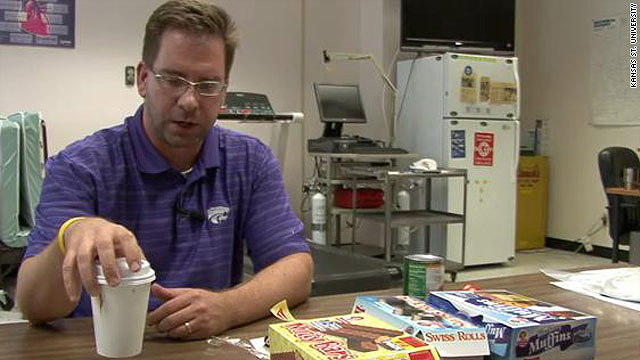
Posted By: Alex - Sun Feb 11, 2018 -
Comments (5)
Category: Food, Junk Food, Dieting and Weight Loss
Burger Grease Artist
In 2009, Arby's commissioned artist Phil Hansen to paint a version of the Mona Lisa using grease from the burgers of 14 of their competitors. He called his creation Mona Greasa.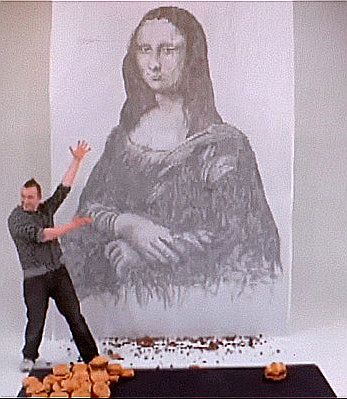
Another curious fact about Hansen. According to wikipedia, while in high school he managed to cause himself nerve damage because of his obsession with pointillism.
He's also written a book that sounds interesting: Tattoo a Banana: And Other Ways to Turn Anything and Everything Into Art
Posted By: Alex - Thu Sep 14, 2017 -
Comments (1)
Category: Art, Junk Food

| Who We Are |
|---|
| Alex Boese Alex is the creator and curator of the Museum of Hoaxes. He's also the author of various weird, non-fiction, science-themed books such as Elephants on Acid and Psychedelic Apes. Paul Di Filippo Paul has been paid to put weird ideas into fictional form for over thirty years, in his career as a noted science fiction writer. He has recently begun blogging on many curious topics with three fellow writers at The Inferior 4+1. Contact Us |




